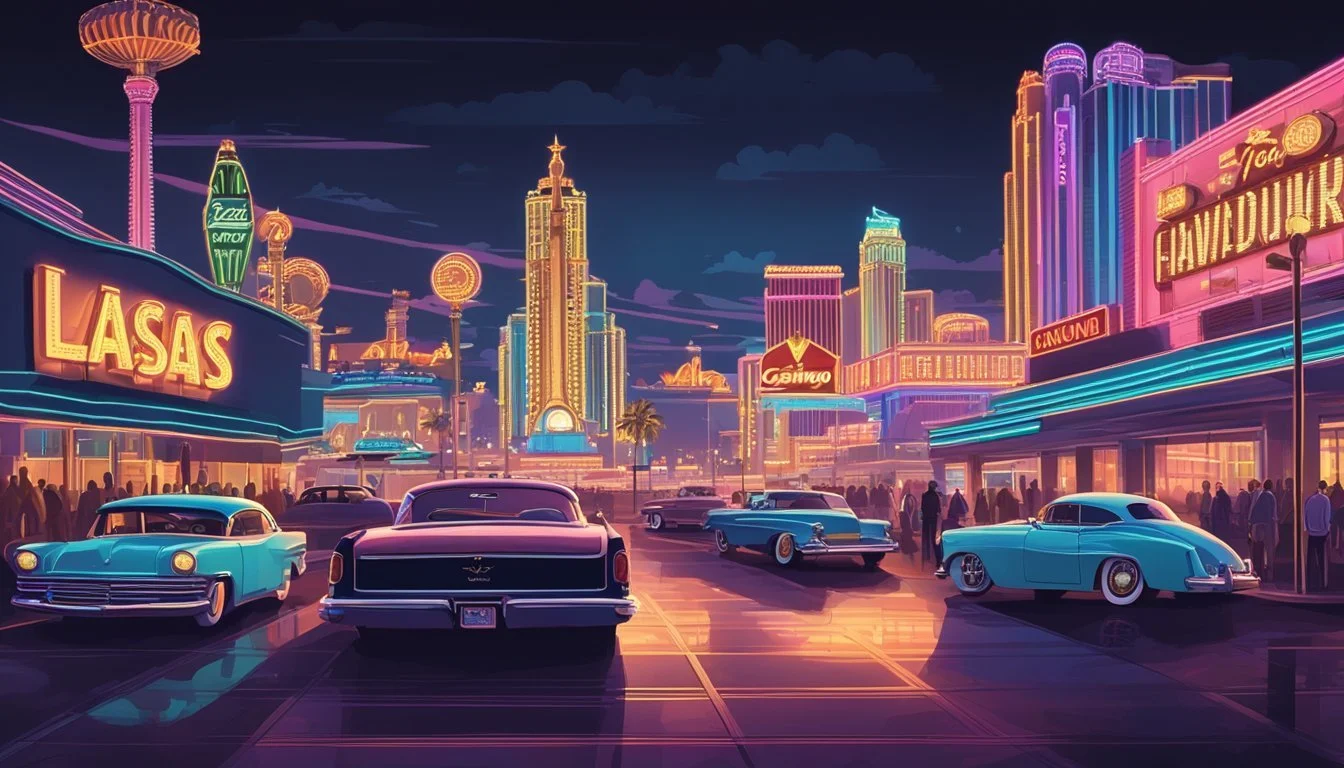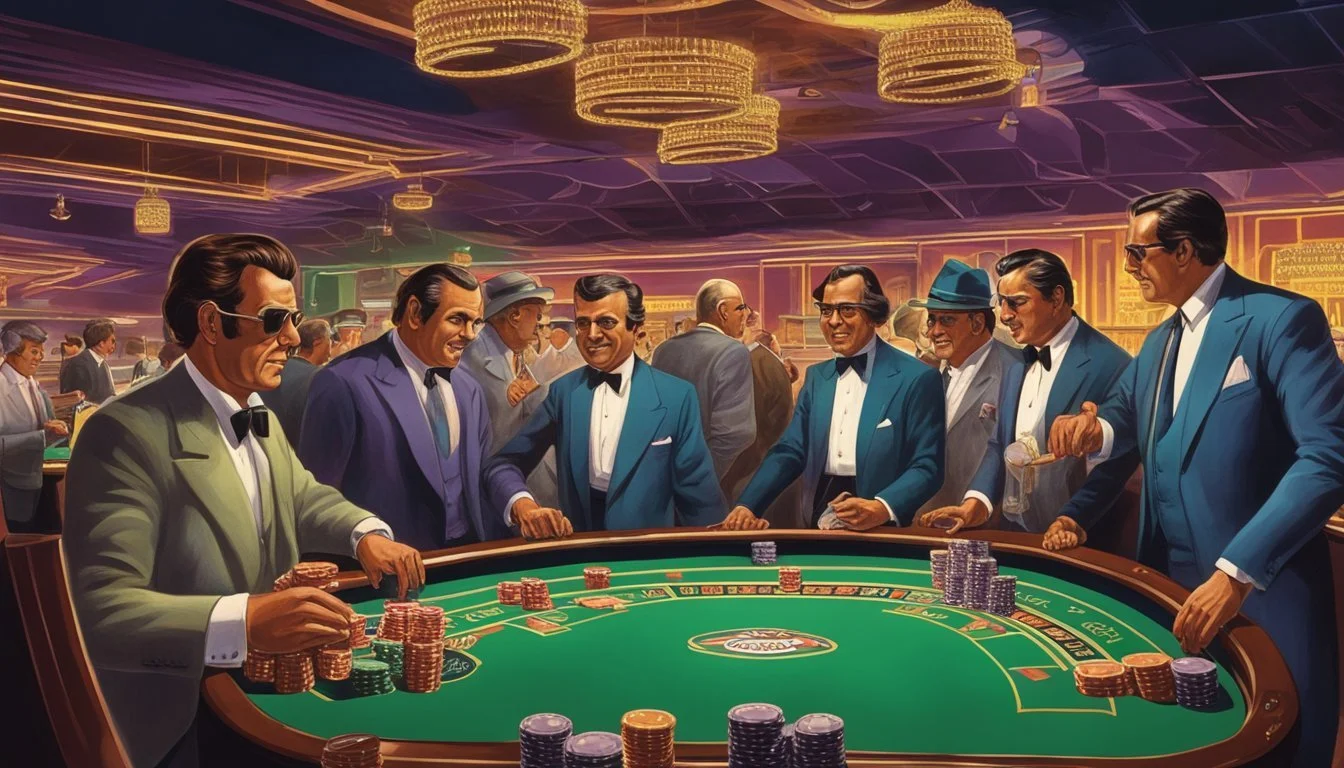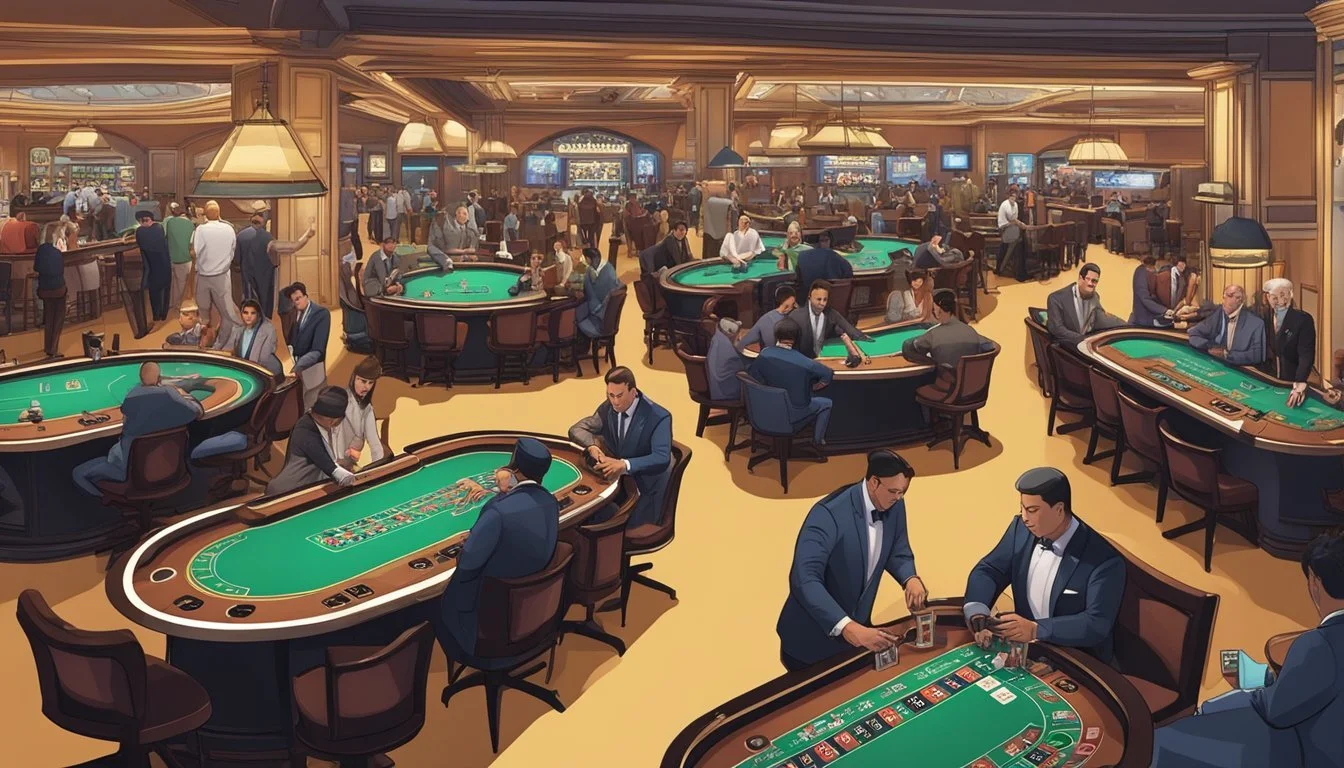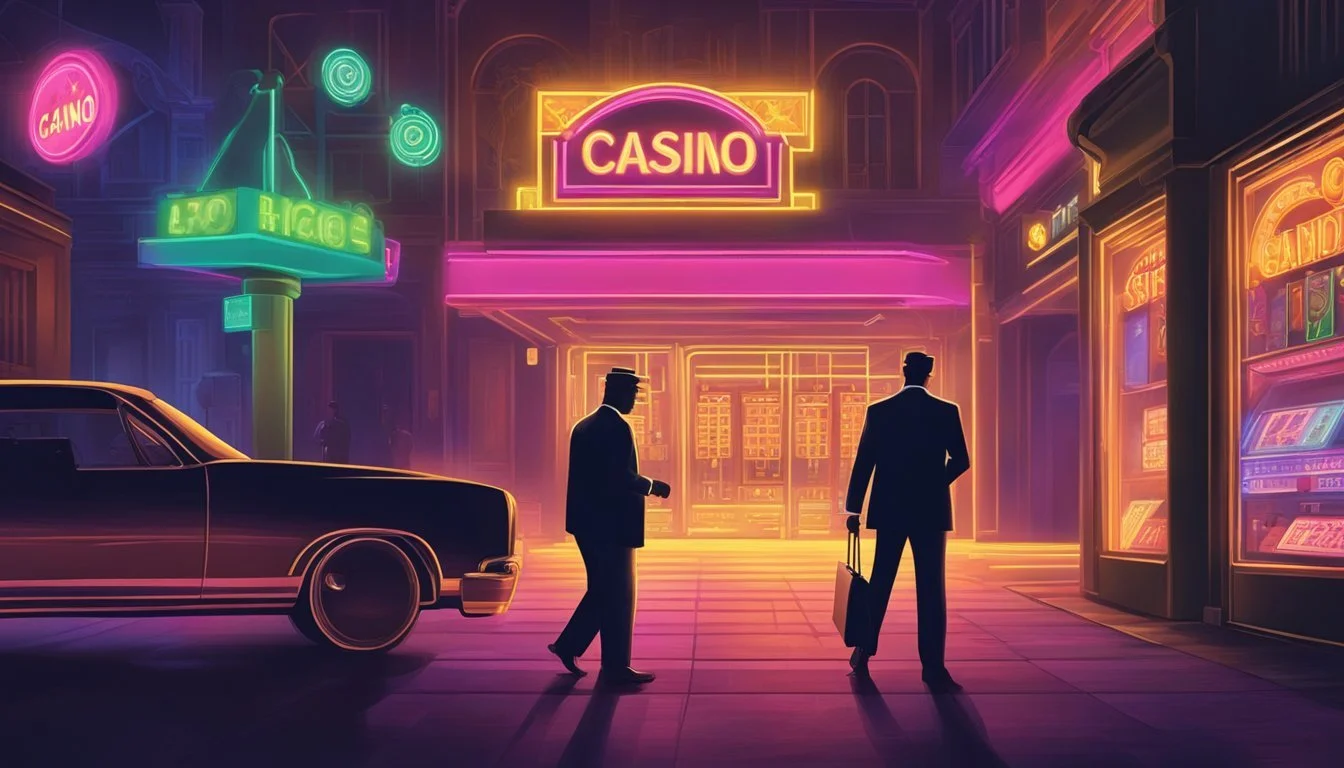Aces and Mobsters: The Vegas Truth Behind 'Casino'
Unveiling Sin City's Criminal Past
Martin Scorsese's 1995 film "Casino" captivated audiences with its gritty portrayal of mob-controlled Las Vegas in the 1970s. The movie, starring Robert De Niro, Joe Pesci, and Sharon Stone, was based on Nicholas Pileggi's non-fiction book "Casino: Love and Honor in Las Vegas." While the names and some details were changed, the core story drew heavily from real events and people in Sin City's criminal underworld.
The film's main character, Sam "Ace" Rothstein, was inspired by Frank "Lefty" Rosenthal, a renowned sports handicapper who ran several casinos for the Chicago Outfit. Joe Pesci's volatile character Nicky Santoro was based on Anthony "Tony the Ant" Spilotro, a ruthless enforcer for the mob. Sharon Stone's role as Ginger McKenna mirrored aspects of Geri McGee, Rosenthal's wife.
Scorsese's meticulous attention to detail brought the inner workings of casino operations and mob skimming to life on screen. From the count room scenes to the car bombing attempt on Rothstein's life, many pivotal moments in "Casino" were rooted in actual events that occurred during Las Vegas's mob-dominated era.
The True Story of 'Casino'
Martin Scorsese's 'Casino' draws inspiration from real events in 1970s Las Vegas. The film portrays the complex relationships between mobsters, casino operators, and their associates during a tumultuous period in Sin City's history.
From Book to Big Screen
Nicholas Pileggi's nonfiction book "Casino: Love and Honor in Las Vegas" provided the source material for the film. Pileggi co-wrote the screenplay with Scorsese, adapting the true story for cinema. The book detailed the inner workings of mob-controlled casinos and the characters involved.
The film depicts the rise and fall of a casino empire, mirroring actual events. It explores themes of greed, loyalty, and betrayal against the backdrop of a glittering but corrupt Las Vegas.
The Real 'Ace' and 'Nicky'
Robert De Niro's character Sam 'Ace' Rothstein is based on Frank 'Lefty' Rosenthal. Rosenthal was a skilled sports handicapper who ran multiple casinos for the Chicago Outfit. His talent for maximizing profits made him invaluable to the mob.
Joe Pesci's Nicky Santoro is inspired by Tony Spilotro. Spilotro was a ruthless enforcer sent to protect the mob's interests in Las Vegas. His violent methods and personal ambitions ultimately led to conflict with casino operators and fellow mobsters.
Both men faced numerous legal challenges and survived assassination attempts. Rosenthal notably escaped a car bombing in 1982, protected by a metal plate under his seat.
Geri: The Woman Behind 'Ginger'
Sharon Stone's character Ginger McKenna is based on Geri McGee, Rosenthal's real-life wife. Like her on-screen counterpart, McGee was a former showgirl with a troubled past.
The film portrays the volatile relationship between Rosenthal and McGee, including her struggles with addiction and her connections to criminal elements. Their tumultuous marriage and eventual divorce mirror the events depicted in 'Casino'.
McGee's life ended tragically in 1982, found dead in a motel from a drug overdose. Her story adds a layer of personal drama to the larger narrative of mob influence in Las Vegas.
Las Vegas in the 1970s
The 1970s marked a pivotal era for Las Vegas, characterized by rapid casino expansion, persistent mob influence, and evolving regulatory efforts. This decade saw the city transform into a glittering entertainment mecca while grappling with criminal elements behind the scenes.
Growth and Glamour of Casinos
Las Vegas experienced a casino boom in the 1970s. The Strip expanded with new mega-resorts, drawing millions of visitors annually. The Stardust, Riviera, and Hacienda became iconic destinations, offering luxury accommodations and star-studded entertainment.
Casinos invested heavily in glamorous shows and attractions. Elaborate production numbers and headlining acts like Elvis Presley and Frank Sinatra became staples of the Las Vegas experience.
Gaming floors grew larger and more opulent. Slot machines multiplied, and table games diversified to cater to a wider audience. The city's skyline changed dramatically with neon-lit towers and themed architecture.
Mob Influence and Control
Despite the glitzy facade, organized crime maintained a strong grip on Las Vegas casinos in the early 1970s. Mobsters from Chicago and other cities exerted control through hidden ownership stakes and intimidation tactics.
The "skim" - the practice of siphoning off unreported casino profits - was widespread. Millions of dollars flowed from casino count rooms to mob bosses, often facilitated by corrupt employees and union officials.
Figures like Anthony Spilotro, immortalized in the film "Casino," oversaw street rackets and enforced mob interests. Violence and threats were used to maintain control over casino operations and silence potential informants.
Gaming Commission and Licensing
The Nevada Gaming Commission intensified efforts to combat organized crime influence in the 1970s. Stricter licensing procedures were implemented to scrutinize casino owners and key employees.
Background checks became more thorough, aiming to identify mob connections. The Commission gained authority to deny or revoke gaming licenses based on criminal associations.
Regulators faced challenges in rooting out hidden mob ownership. Some casinos, like the Fremont and Marina, came under increased scrutiny for suspected ties to organized crime figures.
By the late 1970s, corporate ownership began to replace mob-controlled casinos. This shift, coupled with tighter regulations, gradually reduced the mafia's influence in Las Vegas gaming operations.
The Mafias' Operations
The Mafia's grip on Las Vegas extended far beyond the casino floors. Their influence permeated union operations, financial institutions, and skimming schemes that funneled millions of dollars to crime families.
Funding and the Teamsters Union
The Chicago Outfit leveraged its control over the Teamsters Union to finance casino acquisitions. Through the Central States Pension Fund, the mob provided loans to front men like Allen Glick, who purchased the Stardust and other properties. This arrangement allowed the Mafia to control casinos without appearing on official documents.
Glick's Argent Corporation served as a legitimate face for mob-controlled casinos. The Teamsters Union, under Jimmy Hoffa's leadership, became a crucial tool for the Mafia's expansion in Las Vegas.
The Skimming Operation
Skimming was the lifeblood of the Mafia's casino operations. This process involved removing cash from casino counting rooms before it was recorded as revenue. The Chicago Outfit and other crime families received millions in untaxed profits through this method.
Trusted operatives oversaw the skimming, ensuring a steady flow of cash to mob bosses. The movie "Casino" depicted this operation, showing how mobsters used insiders to access counting rooms and divert funds.
The Fall of Mobsters' Empire
The Mafia's reign in Las Vegas began to crumble in the 1980s. Increased federal scrutiny, including FBI investigations and the Operation Family Secrets trial, exposed the extent of mob influence in casinos.
Key figures like Tony Spilotro faced legal troubles and internal conflicts. The Nevada Gaming Commission tightened regulations, making it harder for organized crime to maintain control.
Corporate ownership of casinos gradually replaced mob-influenced operations. This shift marked the end of an era, transforming Las Vegas into a more regulated and corporate-driven entertainment destination.
Prominent Figures
Las Vegas's casino history is intertwined with colorful characters who straddled the line between legitimate business and organized crime. These influential figures shaped the city's gambling landscape through their ambition, connections, and sometimes violent tactics.
Frank Rosenthal's Genius and Downfall
Frank "Lefty" Rosenthal was a gambling savant who revolutionized Las Vegas casinos. He introduced sports betting to casino floors and implemented female blackjack dealers to attract more players. Rosenthal ran multiple casinos for the Chicago Outfit, including the Stardust, without a gaming license.
His downfall began when his wife Geri, a former showgirl, engaged in an affair with mobster Tony Spilotro. This personal drama, combined with increasing scrutiny from law enforcement, led to Rosenthal's exit from Vegas. He narrowly survived a car bombing in 1982, likely orchestrated by disgruntled mob associates.
Tony Spilotro: Enforcer and Burglar
Anthony "The Ant" Spilotro served as the Chicago Outfit's muscle in Las Vegas. Standing at just 5'5", he compensated for his small stature with brutal efficiency. Spilotro's crew, known as the "Hole in the Wall Gang," specialized in burglaries and home invasions.
His reign of terror included at least 26 murders. Spilotro's affair with Geri Rosenthal and his increasingly independent criminal enterprises angered his mob superiors. In 1986, Tony and his brother Michael were beaten to death in an Indiana cornfield, their bodies later found in a shallow grave.
Political Connections and Oscar Goodman
Oscar Goodman, a prominent defense attorney, represented many high-profile mobsters including Frank Rosenthal and Tony Spilotro. His skill in the courtroom earned him the nickname "The Happy Hooker of the Courtroom" for his ability to get clients off the hook.
Goodman's mob connections didn't hinder his political aspirations. He served as Mayor of Las Vegas from 1999 to 2011, helping to revitalize the downtown area. His unique background as both a mob lawyer and city leader exemplifies Las Vegas's complex relationship with its criminal past.
Cultural Impact and Legacies
The rise and fall of mob-controlled casinos in Las Vegas left an indelible mark on American culture. Their influence extended far beyond the Nevada desert, shaping entertainment, popular media, and public perceptions of organized crime.
The Stardust and its Successors
The Stardust Hotel, immortalized as the Tangiers Casino in "Casino," served as a blueprint for mob-run establishments. Its lavish décor and high-stakes gambling set new standards for Las Vegas luxury. After the mob's decline, corporate entities took over. The Riviera Casino followed a similar trajectory, transitioning from mafia management to mainstream ownership.
These iconic properties paved the way for today's mega-resorts. Their legacies live on in the opulent theming and entertainment offerings of modern Las Vegas casinos.
Hollywood's Fascination with the Mafia
Martin Scorsese's "Casino" brought the mob's Vegas era to life on screen. The film's gritty realism and star-studded cast, including Robert De Niro, Sharon Stone, and Joe Pesci, captivated audiences worldwide.
"Casino" built on the success of "Goodfellas," cementing Hollywood's obsession with mafia narratives. It inspired a wave of mob-themed entertainment, from movies to TV shows.
The Frank Rosenthal Show, featured in the film, highlighted the blurred lines between entertainment and criminal enterprise in mob-era Vegas.
Changing Faces: Las Vegas Today
Modern Las Vegas bears little resemblance to its mob-controlled past. Corporate ownership has transformed the Strip into a family-friendly destination. High-tech security and strict regulations have replaced the era of skimming and violence.
Yet, the city still capitalizes on its gangster history. Mob museums and themed attractions draw tourists fascinated by the criminal legends.
Las Vegas continues to reinvent itself, balancing its notorious past with a future focused on entertainment, technology, and luxury hospitality.
The Mechanics of Casino Operations
Casino operations in 1970s Las Vegas involved complex systems of profit-making, sports betting, and entertainment. Mobsters exploited these mechanisms to extract millions from casinos through various schemes.
Casino Profits and The Skimming
Casinos generated enormous profits through carefully designed games and betting structures. Slot machines, table games, and sports betting all contributed to the house edge.
Mobsters devised intricate skimming operations to siphon off casino earnings before they were reported. This often involved tampering with counting rooms and financial records.
Cash was diverted through hidden routes and secret compartments. Trusted associates transported bags of skimmed money to mob bosses in other cities.
Sports Betting and Frank Rosenthal
Frank "Lefty" Rosenthal pioneered sports betting operations in Las Vegas casinos. He introduced the first sportsbook at the Stardust Casino in 1976.
Rosenthal's innovative betting systems and odds-making expertise attracted high-rollers and casual bettors alike. His operation became a model for other casinos.
Sports betting provided a lucrative revenue stream for casinos and created new opportunities for mob influence. Rosenthal's connections to organized crime eventually led to his downfall.
Entertainment and Female Dealers
Las Vegas casinos used entertainment as a key draw for visitors. Headliners like Frank Sinatra performed regularly, attracting wealthy patrons.
Casinos introduced female dealers to attract more male gamblers. This controversial move sparked debate but proved effective in increasing casino profits.
Ginger Rothstein, portrayed in "Casino", exemplified the complex role of women in Las Vegas casino culture. Many female employees navigated a difficult balance between glamour and exploitation.
Legal Repercussions and Reforms
The rise of organized crime in Las Vegas casinos led to significant legal actions and regulatory changes. Federal and state authorities implemented new measures to combat mob influence and restore integrity to the gaming industry.
The Black Book and Exclusions
The Nevada Gaming Commission created the "Black Book" in 1960 to ban known criminals from casinos. This list included notorious figures like Tony Spilotro and other mob associates. Casinos faced hefty fines for allowing blacklisted individuals on their premises.
The Black Book proved effective in limiting mob presence in casinos. It currently contains around 30 names, mostly connected to organized crime families.
Government Crackdown on Organized Crime
FBI agents intensified their efforts against mob-controlled casinos in the 1970s and 1980s. They used wiretaps, surveillance, and informants to gather evidence of racketeering and skimming operations.
High-profile arrests followed, including Joseph Aiuppa and other Chicago Outfit leaders. These actions disrupted the mob's control over Las Vegas casinos and their access to Teamsters Fund loans.
The Aftermath of Legal Battles
The legal battles resulted in numerous convictions and the revocation of gaming licenses for mob-connected individuals. Frank Rosenthal, the inspiration for the "Casino" movie character, lost his gaming license due to alleged ties to organized crime.
Many casinos underwent ownership changes as corporations took over from individual owners. This shift helped legitimize the industry and reduce criminal influence.
Sports betting also faced scrutiny. Authorities uncovered point-shaving schemes in college basketball and football, leading to stricter regulations on sports wagering.





